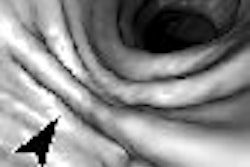Dear AuntMinnie Insider,
There's more going on in computer-aided detection (CAD) for virtual colonoscopy (VC) than sensitivity and false-positive detection rates, of course. The design of the CAD algorithm, the nature and quantity of the CAD training cases, and the computational requirements of the various steps that CAD schemes use to pick out polyps all speak volumes about how the systems will perform in the clinical setting.
In this issue we go under the hood to look at an investigational VC CAD process that its Boston-based developers say slashes CAD's false-positive detections and processing time without losing a single polyp's worth of sensitivity. Find out how they did it in our Insider Exclusive story, brought to Insider subscribers before our other AuntMinnie.com members can access it.
Speaking of Boston, coming up in the next few weeks is the 8th International Symposium on Virtual Colonoscopy, to be held October 15-16, followed by a hands-on training course. Check back in your Virtual Colonoscopy Digital Community for same-day reports from the meeting. You can also read about upcoming changes in the way the meeting is run by clicking here.
In other news, a new study found robust and independent associations between coronary artery disease and colorectal cancer. Also, researchers from the U.K. found 3D VC equivalent to conventional colonoscopy, and a team from Mayo Clinic in Rochester, MN, reported that neither the reading method (2D versus 3D "virtual dissection") nor reconstructed slice thickness had any effect on VC results. In Canada, dismally low colorectal cancer screening rates remained low unless screening was specifically recommended by the patient's primary care physician.
Finally, you'll want to check out excerpts from Dr. Perry Pickhardt's new Atlas of Gastrointestinal Imaging: Radiologic-Endoscopic Correlation, including a couple of sections on virtual colonoscopy.




















